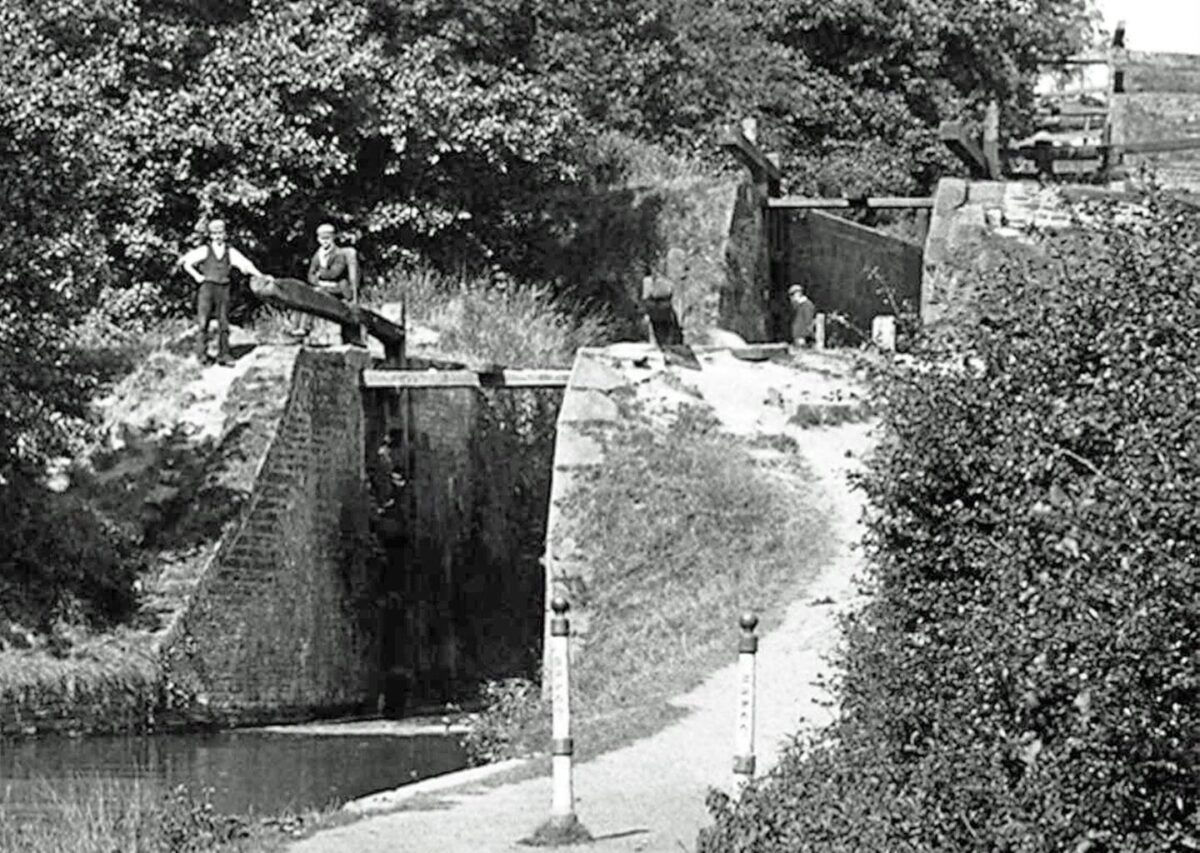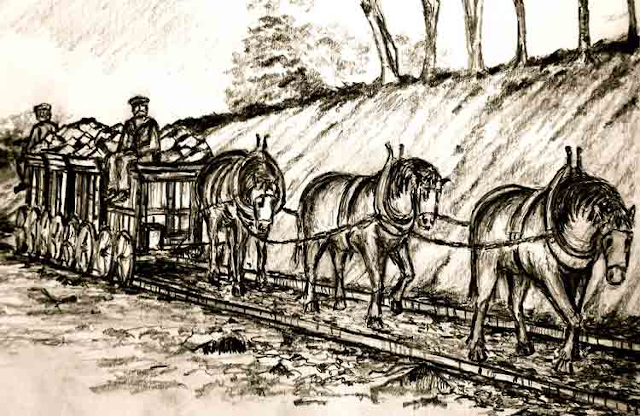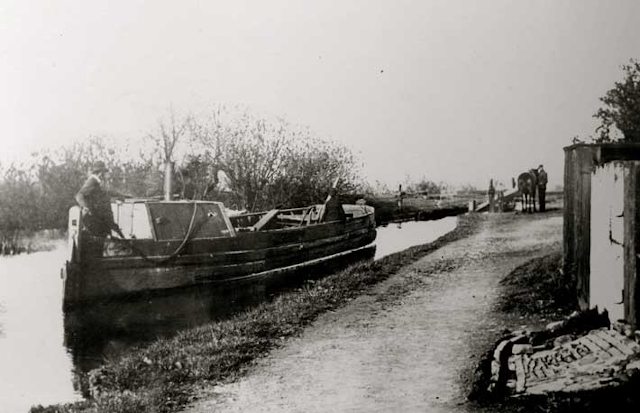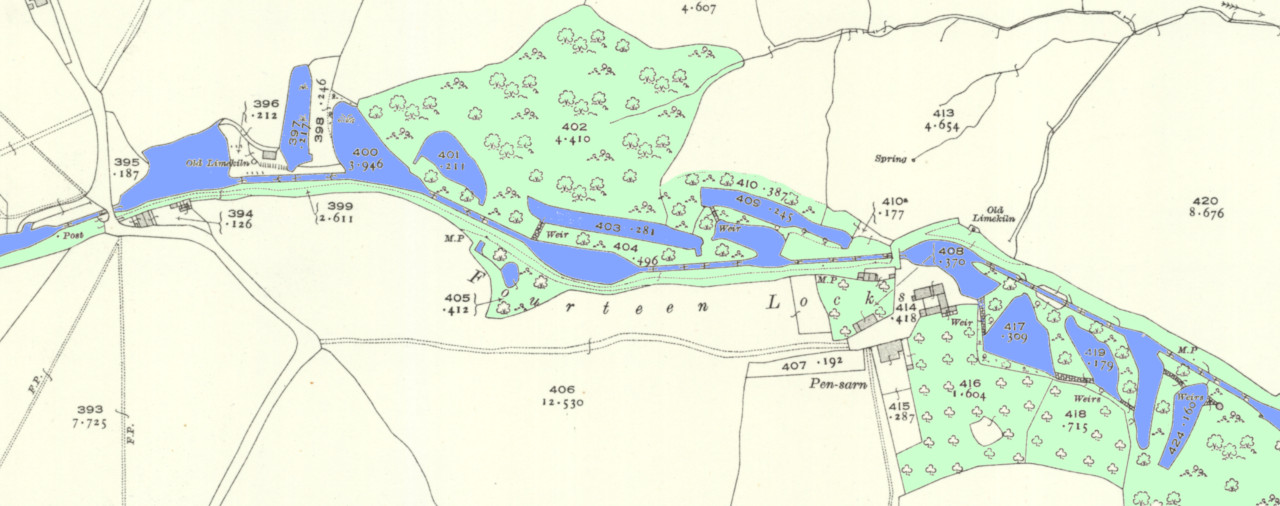Introduction to Fourteen Locks and the Monmouthshire Canal

Map courtesy of Waterway Routes. Contains OS data © Crown copyright and database rights. All other work © www.waterwayroutes.co.uk
Fourteen Locks, or the Cefn Flight, is one of the most important engineering triumphs of the Monmouthshire Canal and it is impossible to tell the story of locks without understanding why a canal was needed in the first place.
The major problem facing industry towards the end of the eighteenth century was transport. The Industrial Revolution in the South Wales Valleys was initially based on iron. Roads were often poor so that the carriage of heavy or bulky goods was slow and expensive in man power. Water was the alternative. In South Wales the rivers were not conducive to boat transport. The building of the artificial waterways (canals) in England opened a new chapter in transport history that was to bring prosperity to the South Wales ports.
The high ground to the north of the South Wales Valleys was rich in minerals. The twenty mile long ridge from Blaenavon to Hirwaun contained the iron, the limestone and the coal needed for the ‘new’ works. The English ironmasters who moved into the area were used to using canals to export their goods so naturally looked to similar facilities in the South Wales area.
Given the geography of the area the construction of the canal required ingenuity and sheer hard labour. In the first committee meeting of The Monmouthshire Canal Company held on 10th July 1792 Thomas Dadford Junior, the engineer responsible for construction of both the Main Line and the Crumlin Arm, stated that he wanted 200 wheelbarrows, six dozen casting tools and six dozen shovels! It would be back breaking work, especially constructing the locks.
The Monmouthshire Canal was authorized by Act of Parliament in 1792. The Main Line stretched from Pontnewynydd, NW of Pontypool via Pontymoile to Newport and an additional branch stretched from Malpas to Crumlin.
The Main Line was 11 miles long with 42 locks. 11 of those locks were on the 2 miles from Pontymoile to Pontnewynydd and that section was often short of water. It was replaced by a tramroad soon after 1812 and closed completely in 1854.
The Crumlin Arm or Branch was also 11 miles long and had 32 locks lowering the canal by 358ft. Even though it is no longer fully navigational, the Cefn Flight of 14 locks at Rogerstone was one of the wonders of the British canal system when it was constructed.

The fiftieth meeting of the committee of the “Monmouthshire Canal Navigation” held at the Westgate House Inn in the town of Newport on Wednesday the 25th day of November 1795 records the terms of the contract awarded to Walter Waters as follows:
“For raising stone, hauling and setting the masonwork at the rate of Seven shillings per perch of 36 cubic feet;
Raising, hauling and setting the trunk stones at four shillings per yard superficial measure;
Finding and hauling the stones and sheeting the bottom of the locks at three shillings per superficial yard;
Cutting the several lock pits at five pence per cube yard and backing the said 15 locks at £10 each;
The Company only to find Lime, Sand, Barrows, Planks and Water in the Canal close to the Upper Lock.”
N.B. Notice that Walter Waters was engaged to build 15 locks!
Nothing was left to chance. Thomas Dadford Junior was ordered that if he found that a certain Edward Lewis was not likely to have the water in proper time at the head of the locks then he was to set other hands to do the work. However, there were problems, with at least one complaint of trespass for the purpose of digging stone for lock building. The theft of materials was taken very seriously with a reward of five guineas being offered for information leading to the arrest of the person or persons who stole timber in the August of 1797.

The locks follow the contours of the land and are quite unique in their construction comprising of five pairs of locks, one triple set of locks and one single lock. A clever system of pounds and ponds ensured that water was retained as much as possible for operational purposes. (See map above)
From Lock 8 to Lock 21 the canal is raised 167ft (51m) in just half a mile (804m). The flight was completed by 1798, making the Crumlin Arm of the Monmouthshire Canal fully navigational.
Newport Castle and Fourteen Locks – Is there a link?
It was soon very busy with boats carrying largely iron from Crumlin to Newport. The impact on Newport was staggering. Before 1800 the population was less than one thousand people, but by 1850 it had reached about twenty thousand. It was an incredible period of time, indeed, the locks were so busy that gas lighting was installed so that their use could be extended at night.
The 397th Meeting of the Committee of the Monmouthshire Canal Navigation held at the Canal House in Newport on Wednesday 1st day of November 1820 records:
“Resolved that the Trade be allowed to pass their empty Boats up through the Locks by night undertaking to repair at their expense any injury which may be done thereby, no horses to be used and the Company to find two men to attend by way of check, the same to be enforced till next Committee Meeting.”
Rules of employment were strict. The lock keeper employed at the Cefn in 1800 was fined a half a guinea for steering a boat!

From the outset, tram roads or rail roads were an important part of the Company’s affairs and income. In December 1829 a locomotive started work on the Sirhowy tramroad. In 1836 a railway ( as today ) from Newport to Pontypool was proposed though not built until 1845. In 1843 discussions took place re the changing all the Company’s rail roads to railways.
In 1848 the die was cast when it changed its name to The Monmouthshire Railway and Canal Company, hence MR&CC on some of the boundary markers. By 1854 the lower part of the canal was little used and the canal was closed as far as Llanarth Street. The released land was used for railway sidings – a sign of the times.
In 1865 the Company bought the Brecknock and Abergavenny Canal to safeguard the water supply to Newport Docks. It also gained some of its income by the sale of water to industry. However, by this time the canals carried little more than general goods or short journey traffic, the coal and iron to Newport having transferred to the railways.
In 1875 the day-to-day running of the Company was transferred to GWR. In 1880 the ‘concern’ was bought by GWR and the two canals became known as The Monmouthshire and Brecon Canals.
The last regular boat traffic was in 1920s and tolls were not collected after 1935 though working (cargo carrying) boats continued to use the canal until 1940s. The last recorded toll at Fourteen Locks was in 1935 for three boat loads of furniture.

The era of the canal as an industrial carrier had slowly but surely withered.
It may be partly filled in and derelict in much of its length but it is not dead. It will be revived and like the Brecknock and Abergavenny Canal will have the last laugh for most of the railways have gone and will not be reborn. The canal from Pontymoile to Newport and from Malpas to Cwmcarn will once more see boats, not working but giving people a lot of pleasure.
For more historical information:
View a presentation on Fourteen Locks Past and Present
Get more information from our Fourteen Locks booklet.
History – Ray Haydon MBACT
Photographs from MBACT Archive
Illustrations – Tom Maloney MA
Featured image at the top of this page – Coloured map based on an Ordnance Survey map 1917. Reproduced with the permission of the National Library of Scotland under a Creative Commons Attribution (CC-BY) licence.

